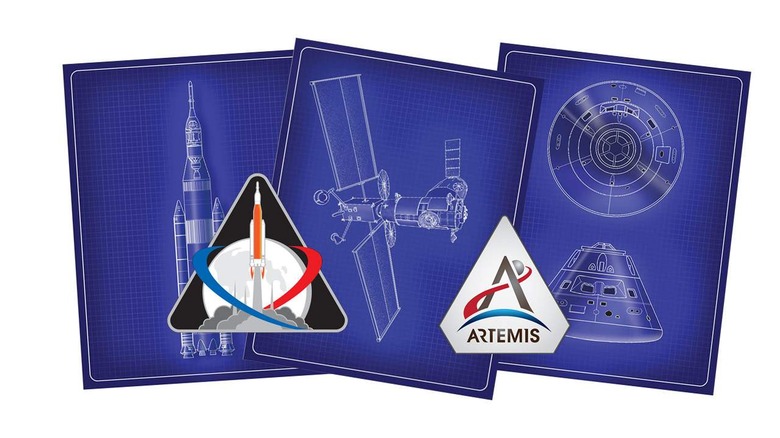NASA Talks About The Future Of The Artemis Moon Mission
NASA has been pushing hard to build a new spacecraft and plan missions that will put humans on the moon's surface again for the first time since the Apollo era. This week, NASA provided the first major Artemis mission update since President Biden took office. In the update, NASA talked about challenges and progress made for the mission and reiterated the commitment to exploring the moon and sending astronauts to Mars in the long term.
NASA administrator Bill Nelson led the conversation. He laid out a path for the early Artemis missions paving the way for eventually putting astronauts on the surface of the moon. Nelson took time to say the space agency was happy with the recent decision to uphold the selection of SpaceX to develop and demonstrate a modern lander spacecraft for putting astronauts on the moon. NASA's selection had been challenged, bringing a stop to talks between it and SpaceX following its selection.
Nelson said NASA and SpaceX had resumed conversations, and they are glad to be getting back to work. One not-so-bright spot in the conversation is the timeline for putting humans back on the moon under the Artemis program has changed due to the lawsuit and other factors. NASA believes that the first human landing under Artemis won't be any earlier than 2025. However, before that surface mission can happen, NASA and its partners have a significant amount of work to do.

Before putting humans back on the lunar surface, NASA and its partners are focusing on the Artemis I uncrewed test flight and the Artemis II crewed test flight that will see astronauts orbiting the moon. Also covered in the conversation were details on the development cost for the Orion spacecraft that will be used for the Artemis missions. Development costs now stand at $9.3 billion from fiscal year 2021 through the first crewed test flight expected to happen no later than May 2024.
Along with those two missions, NASA is also looking down the road to future uncrewed Lunar Lander missions conducted with SpaceX that will precede the Artemis III crewed lunar landing. In addition to delays stemming from the lawsuit that attempted to overturn the choice of SpaceX for the lunar lander program, Nelson also cited delays due to development challenges. He also blamed the lack of sufficient funds for the HLS competition and the pandemic for making the goal of putting humans back on the moon by 2024 unachievable.
NASA plans at least ten moon landings in the future and is asking for increases in funding for the future Lander competition, beginning with its 2023 budget. Whether or not the funds will be allocated remains to be seen. In addition, NASA is working on many fronts to prepare for the Artemis missions, including issuing a request for information to industries to maximize efficiency in the Space Launch System enterprise. It also sought industry partners to build new spacesuits and provide spacewalk services for Artemis missions and the ISS.
NASA was clear that this update doesn't impact later Artemis missions schedules and plans for the lunar surface. However, it still plans for Gateway development and other activities expected to kick off later in the decade. Gateway is a lunar outpost that will orbit the moon providing infrastructure for long-term exploration of the moon and beyond.
NASA had previously planned Artemis I to launch early next year. Last month, the capsule was fitted to the SLS rocket as NASA prepared for that launch. In September, NASA chose the Artemis Rover lunar landing location.
